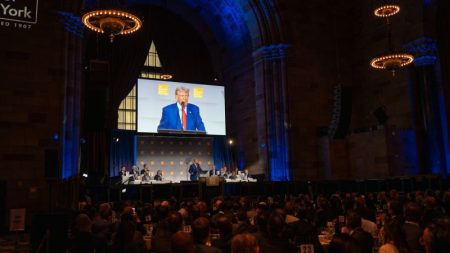When Vladimir Putin announced Russia’s “special military operation” in Ukraine in February 2022, he included a complaint about America’s self-regard. “Where does this insolent manner of speaking from the position of your own exceptionalism, infallibility and all-permissiveness come from?” the Russian president asked.
There was nothing new in Putin’s protestation. Throughout the cold war, the Soviets craved recognition from the Americans and were hypersensitive to perceived slights. Putin infamously described the dissolution of the USSR as the “greatest geopolitical tragedy of the 20th century”. By this he meant the end of the Russian imperium, not Soviet communism. If America could not freely give the respect that Russia so yearned for, it would have to be won by force of arms.
As Sergey Radchenko shows in To Run The World, his masterful new history of the cold war, Putin’s psychology is very much in keeping with that of his Soviet predecessors. This psychology includes injured pride and an unquenchable sense of insecurity.
Ironically it was Putin’s decision to open up the Soviet archives over the past decade — an act of radical transparency that reflected Putin’s obsession with Russian history — that enabled Radchenko to reach these conclusions. His move made available a “full-blown deluge” of Soviet documents and personal papers after years in which historians had to make do with a trickle. This gave him access to a stream of consciousness of the USSR’s most senior officials spanning the period from Joseph Stalin to Mikhail Gorbachev.
The result is a revisionist history of the cold war that downplays ideology as Moscow’s guiding motive. This marks quite a departure from most cold war histories, which pay more attention to that than national character. “Marxist-Leninism itself does not get us very far in understanding Soviet behavior,” Radchenko writes. “It was an ill-fitting cloth that never adequately draped the incongruent outlines of Moscow’s ambitions.”
What were — and are — those ambitions? The simplest answer would be to secure western recognition for Russia’s great power status. In 1944, Stalin got Winston Churchill’s acquiescence to Moscow’s sphere of influence when they scribbled country-by-country percentages for central and eastern Europe on a napkin. Hungary and Yugoslavia were each divided 50:50, while Greece was skewed 90:10 to Britain, and Romania 90:10 to the Soviets.
Their cynical bargain was formalised in the notorious Yalta Conference of 1945. The near-fatal decision by Nikita Khrushchev, Stalin’s successor, to station Soviet intermediate nuclear missiles in Cuba in 1962 was prompted less by war-making plans than by a desire for parity with the US, which stationed missiles at several bases close to the border of the USSR. John F Kennedy defused the crisis by quietly removing US missiles from Turkey. In addition to equal status, Moscow had wanted to throw “our hedgehog in the Americans’ pants”, in the words of one Soviet official.
In spite of the Vietnam war, the 15 years following that near-miss in Cuba were the heyday of east-west détente. This was as close in history as Moscow has come to achieving the respect that it believes is its due. Humanity had entered a bipolar world in which the USSR was one of the poles. Yet this period was all too fleeting.

Khrushchev, whose antics had become an embarrassment, was removed in a Politburo coup in 1964. After a bout of Kremlin machinations, chiefly involving the sidelining of his Politburo rival Aleksei Kosygin, Leonid Brezhnev emerged as the first among equals. Détente survived the Soviet invasion of Czechoslovakia in 1968 mainly because Washington wanted Moscow to help extricate it from its quagmire in Vietnam. The Soviets never did. Détente also survived Richard Nixon’s 1972 opening to China, which played heavily on Brezhnev’s paranoia about the threat from the east. Indeed, Nixon’s China move only redoubled Brezhnev’s efforts to pacify the USSR’s western flank by cementing détente.
Fascinatingly, Radchenko reveals that Brezhnev even had a racial motivation for the policy, believing that the European races should stick together. “As President Nixon once said,” Brezhnev recounted, “you can destroy us seven times over, and we can destroy you seven times over. I told him in response that after this happens, the whites will be gone, only the blacks and the yellows will remain.”
Yet détente’s golden age never quite lived up to Moscow’s dreams. Though Henry Kissinger, Nixon’s acrobatic national security adviser, mused about a joint US-Soviet “condominium”, and the superpowers pledged non-interference in each other’s domestic affairs, the USSR could not bring itself to abandon its revolutionary credentials. Soviet adventurism in Angola, the Horn of Africa, Portugal and ultimately in Afghanistan, which it invaded in December 1979, tipped US public opinion against détente.
Radchenko skilfully and vividly depicts a gerontocratic Politburo that wanted nuclear stability without relinquishing their freedom to pick up client states in what was then often called the “third world” (the Soviet bloc being the “second world”). Here again, this was as much a question of Russian self-esteem as Marxist-Leninist ideology. Since the US had client states all over the world, the Soviets should too. But these proved to be highly expensive. As Radchenko points out, Moscow’s backing of Vietnam’s communists almost broke the bank. Hanoi never repaid its debts.
If I have one quibble with Radchenko’s otherwise indispensable book, it is that he underplays the effects of US President Jimmy Carter’s weaponisation of human rights behind the Iron Curtain. (In full disclosure, I am writing a biography of Zbigniew Brzezinski, Carter’s national security adviser, and Kissinger’s great rival.) Kissinger saw the USSR as a permanent fixture on the landscape. Brzezinski saw the USSR’s nationalities and the Warsaw Pact satellite states as its Achilles heel. The latter turned out to be correct.
As Radchenko lays out, the USSR’s demise in 1991 came with a whimper, not a bang, in the guise of its final leader, Mikhail Gorbachev, who became the last general secretary of the Soviet Communist party in 1985.
As an émigré Russian scholar — teaching at the Johns Hopkins School of Advanced International Studies in Washington and at Cardiff University — Radchenko is well placed to describe what has happened since the USSR’s dissolution in 1991. He vividly depicts the “clean-shaven gorillas in Adidas pants” who made their fortunes in the Moscow wild west of the 1990s.

This was also the era of Bill Clinton and Boris Yeltsin. As one of Radchenko’s colleagues, Mary Elise Sarotte, memorably observed, Yeltsin’s fondness for vodka was deemed a price worth paying: “Yeltsin drunk was better for the United States than most other Russian leaders sober”. But then came Putin. The rest is current affairs.
Radchenko’s conclusion is bleak because it is persuasive. Under Putin, he argues, Russia believes it has another chance via the rubric of multipolarity to destroy the world that the US has made: “With the right combination of chutzpah and good luck, Russia could one day recover its illusive greatness and its insatiable, self-destructive ambition to run the world”. Putin is gambling his country’s future — and other people’s security — on a quest that can never be sated.
To Run The World: The Kremlin’s Cold War Bid for Global Power by Sergey Radchenko Cambridge University Press £30, 768 pages
Edward Luce is the FT’s US national editor
Join our online book group on Facebook at FT Books Café and subscribe to our podcast Life & Art wherever you listen
Read the full article here



